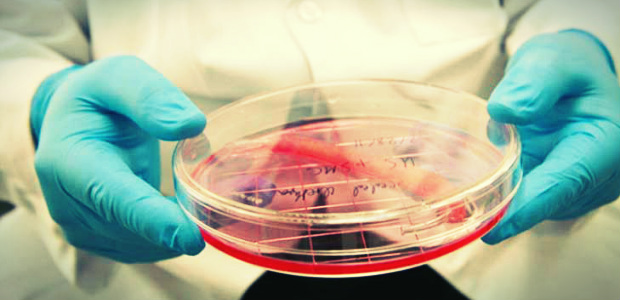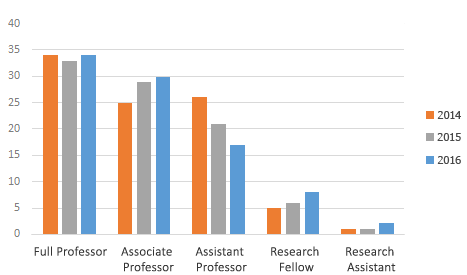Dipartimento di Medicina Molecolare e Biotecnologie Mediche
 The Department of Molecular Medicine and Medical Biotechnology (DMMBM) was established in January 2013. Main research activities of the Department concern the study of the structure and function of biological molecules and their involvement in the pathogenesis of human diseases, and the development of innovative biotechnological approaches for prevention, diagnosis and treatment of human diseases. The Department members are Faculty staff and/or tutors of the PhD Program in Molecular Medicine and Medical Biotechnology (http://dmmbm.dip.unina.it/en/teaching/phd-program/3/).
The Department of Molecular Medicine and Medical Biotechnology (DMMBM) was established in January 2013. Main research activities of the Department concern the study of the structure and function of biological molecules and their involvement in the pathogenesis of human diseases, and the development of innovative biotechnological approaches for prevention, diagnosis and treatment of human diseases. The Department members are Faculty staff and/or tutors of the PhD Program in Molecular Medicine and Medical Biotechnology (http://dmmbm.dip.unina.it/en/teaching/phd-program/3/).
Numerous research projects developed by scientists and teachers of the DMMBM also contribute to the activities of the University Hospital Federico II, in particular in the Hospital Departments of Laboratory Medicine and of Transfusion Medicine.
The DMMBM promotes the dissemination of research results, lifelong formation, transfer of knowledge and technology as a factor of socio-economic development, scientific cooperation. To this end, the DMMBM collaborates with numerous organizations and research institutions. The collaboration with two of these Institutions, the CEINGE research center and the Institute of Endocrinology and Experimental Oncology of the CNR, are of crucial relevance for the research developed in The DMMBM.
Research output (2011-2013)

Data on the research output of the Department are extracted from the 2011-2013 Research activities Review (SUA-RD)
Staff

Data on the Department Staff is taken from the institutional website of the Italian Ministry of University and Research
Research Areas
Research projects
The scientists of the DMMBM are coordinating many research projects in the fields of molecular medicine and medical biotechnologies. The currently active grants were obtained from various public and private Agencies, including the Italian Ministry of Education, University and Research (PRIN, FIRB, PON), the Italian Ministry of Health, the Italian National Research Council (CNR), the Regione Campania, the Italian Association of Cancer Research (AIRC), Telethon, etc. Numerous projects are founded by grants obtained by our scientists, who, on the basis of specific Agreements, carry out part of their research activity at the CEINGE Research Center or at the Institute of Experimental Endocrinology and Oncology of the CNR. Also in these case the grants were obtained through competitive selections from European Commission (ERC, Framework Programs) and private Agencies.
Some of these projects are coordinated by our youngest scientists, who were successful in obtaining competitive grants from the Italian Ministry of Education, University and Research (FIRB – Futuro in ricerca and SIR).FIRB (National Research Projects)
- A MULTIPLE METHODOLOGICAL APPROACH TO IDENTIFY SUSCEPTIBILITY GENES TO NEUROBLASTOMA CLINICALLY AGGRESSIVE
Despite an aggressive therapeutic treatment, survival for high-risk neuroblastoma remains less than 40%. Significant improvements related to survival may come from innovative treatments based on molecular genetic abnormality. The purpose of this project is therefore to identify common DNA variants predisposing to high-risk neuroblastoma by in silico analyses and genetic association studies. The progress made by this research will result in multiple new opportunities to impact patient care. - Identification of miRNAs that modulate the function of BMP4 and Nodal/Activin pathways in pluripotent stem cells
miRNAs have a crucial role in pluripotency and differentiation of Embryonic Stem cells (ESCs). We have demonstrated that BMP4 controls the transition from ESC undifferentiated state to epiblast stem cells (EpiSCs) by generating a feedback loop that involves miR-125a. Our working hypothesis is that the same type of control of the cell fate is adopted in various critical steps of differentiation or induction of pluripotency. The present project is aimed to identify the miRNA that are controlled by BMP4 and/or Nodal/Activin in the undifferentiated ESCs and during differentiation. - Involvement of mTORC1 activation in striatal maladaptive changes underlying L-DOPA-induced dyskinesia
Levodopa (L-DOPA) remains so far the gold standard therapy for Parkinson's disease. However, after its prolonged administration the majority of the patients develop involuntary movements, known as L-DOPA-induced dyskinesia (LID). LID is mainly related to alterations in striatal cAMP/PKA/DARPP-32, ERK1/2 and the mammalian target of rapamycin complex 1 (mTORC1) pathways. Based on the findings that the lack of the striatal mTORC1 modulator, Rhes, significantly reduced LID in Rhes knockout (Rhes-/-) mice, we plan to investigate the influence of Rhes on behavioral, biochemical and electrophysiological alterations underlying LID onset and severity in hemiparkinsonian Rhes knockout mouse model.
SIR
- TARGETED NEXT GENERATION SEQUENCING AS INTEGRATIVE TOOL FOR PROGNOSIS AND FOLLOW-UP OF PATIENTS WITH HEREDITARY ANEMIAS
Differential diagnosis, classification and stratification of hereditary anemias (HA) are often difficult. The main aim of this project is to create a targeted-NGS Prognostic tool for HA, which can provide a catalogue of phenotype-modifier variants responsible of improvement/worsening of the clinical phenotype of HA patients. This project will allow expanding knowledge on HA pathophysiology, as well as improving patient management.
Libraries, labs and facilities
The Department of Molecular Medicine and Medical Biotechnology has many research Laboratories located in various buildings of the Campus of the Federico II Medical School, Via S. Pansini, 5: Bld. 4 (ground floor, 2nd , 3rd, 4th), Bld. 6 (ground floor), Bld. 9 (ground floor, 2nd), Bld. 18 (2nd floor), Bld. 19 (floor 3th, 6th, 12th, 13th, 14th), Bld. 19/A (floor 2nd, 3rd). These Laboratories have state of the art equipment to carry out research in biochemistry, cell biology, molecular biology, microbiology, computational biology, including cell culture facilities, cold rooms, Laboratories for the handling of radiolabelled compounds, cell imaging, etc. The Department has two seminar rooms located inside building 19, at first and fourth floor. The Department hosts an Animal Care Unit. The animal house rooms have been designed to provide a suitable environment to the animal species, complying with the conditions set out by current law, and is licensed for the maintenance of the following species: mice, rats and amphibians. Many scientists of the DMMBM have access, because of specific Agreements, to equipment and infrastructures of the CEINGE Research Center of the Institute of Experimental Endocrinology and Oncology of the Italian National Research Council (CNR), which are crucial for most of their research activities.
Third mission
DMMBM is committed to support translational research. In this view the DMMBM participates to the activities of the Campania District of Biotechnology. A very close collaboration is established with two research consortia, namely Biogem and Ceinge. The DMMBM collaborates with Biotech Companies, like Okairos and Nouscom, which are involved in the development of innovative vaccines, and with Prius and Prindex, which are interested in the diagnosis of immune-related diseases.
DMMBM promotes the diffusion of biomedical sciences outside of the science word. In particular, we want to transfer to students of High Schools the reasons why to make science in the Biomedicine and Health Biotechnology. For example, we recently organized an event, entitled "Stupor Scientiae", during which the Department has hosted students from High Schools, who participated in laboratory activities. Similarly, we attended to the event Futuro Remoto 2015, through the involvement of teachers as well as of many PhD students.